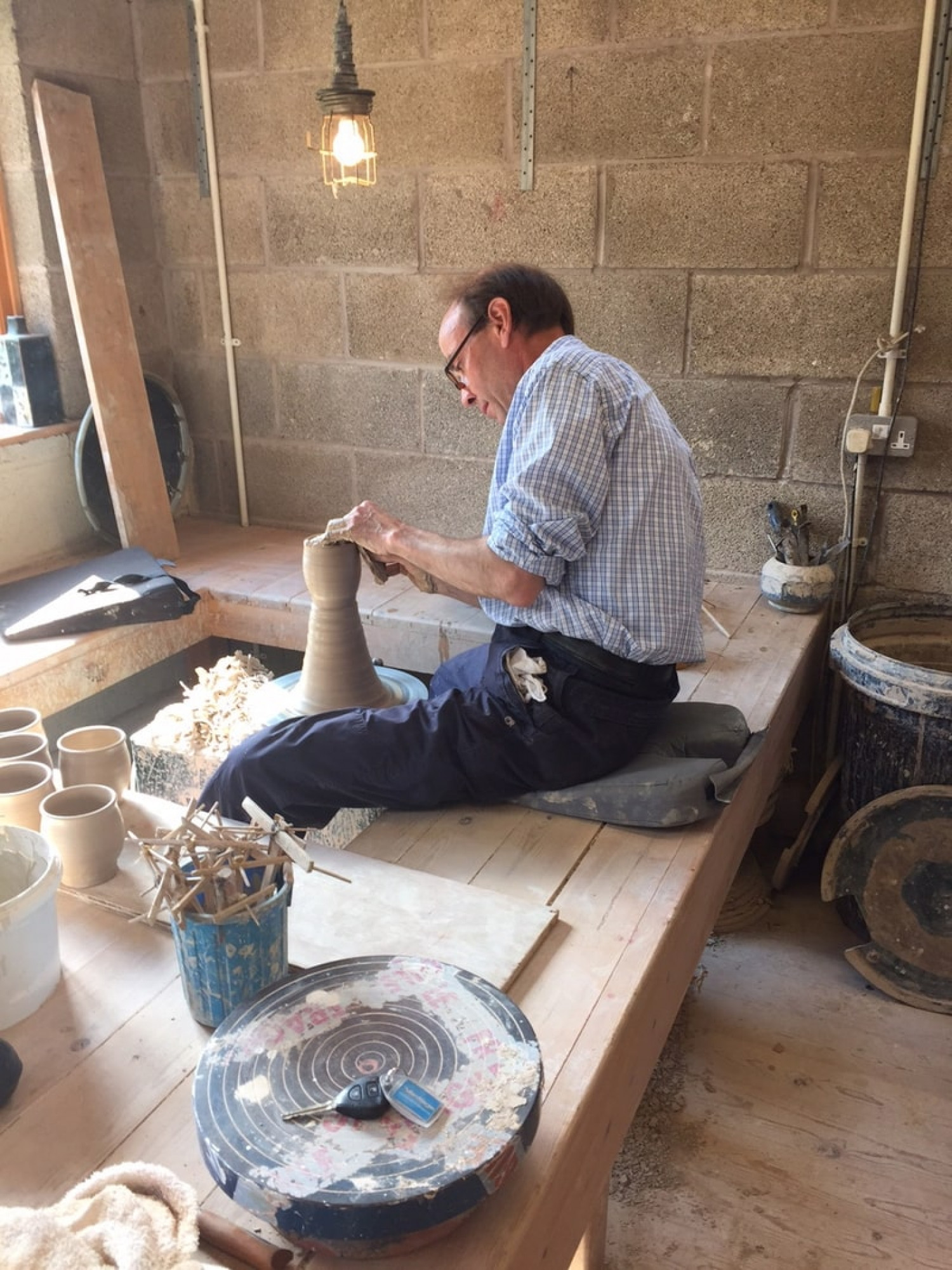
I have returned four times to Japan and still draw on my experiences there. I was curious to learn the technique of Zogan the inlay of slip on clay and rope decoration on the surface of clay which is the main reason why I went to study under Tatsuzo Shimaoka. I love the surface texture created by this method and the use of different types of wood ash glaze to bring out the rope patterns.
During the last two decades William Plumptre has built a reputation as one of the outstanding English potters working in the distinguished Anglo-Japanese tradition, founded in the early twentieth century by the great friends and potters Shoji Hamada and Bernard Leach.
After leaving Chelsea School of Art he spent two years working in Japan, which included the unique opportunity of one year within the workshop of Tatsuzo Shimaoka, a pupil of Shoji Hamada. Plumptre was one of only 12 non-Japanese students who worked for the distinguished potter during his lifetime. In 1996, Shimaoka was created a Living National Treasure, one of Japan’s highest honours. Plumptre’s study with Shimaoka had a pivotal influence on his future work, as he returned to England with a heightened knowledge and experience of the processes and possibilities of working with clay, glazes and firing with wood.
Plumptre creates classical but powerful forms, with a strong commitment to the centuries-old repertoire of Japan. He works with stoneware clay, mostly thrown on the wheel, although some of his work is slab built and press moulded. Texture is introduced to the pottery with rope impressions, fluting, combing, sgraffito and brushwork.
Further texture and colour is achieved with the application of cobalt and copper slips and glazes, which are produced using local stone and wood ash. The colours are often soft and muted reflecting colours in nature, ranging from tenmoku browns and copper reds to creamy whites and cobalt blues. The decoration on each individual pot is carefully considered and the effect is understated so as to retain elegant proportions and purity of form.
Working from his 17th Century farmhouse in the Lake District, Plumptre throws on either a traditional Japanese kick wheel or an electric wheel, using a mixture of two clays, a Dorset Ball Clay and a Cornish Fire Clay. The pots are glazed with wood ash glazes and he also uses Scottish granite which is high in silica and Kirkstone slate dust from a local quarry. All the work is fired in a 65 cubic foot gas-fired kiln Plumptre designed and built himself.